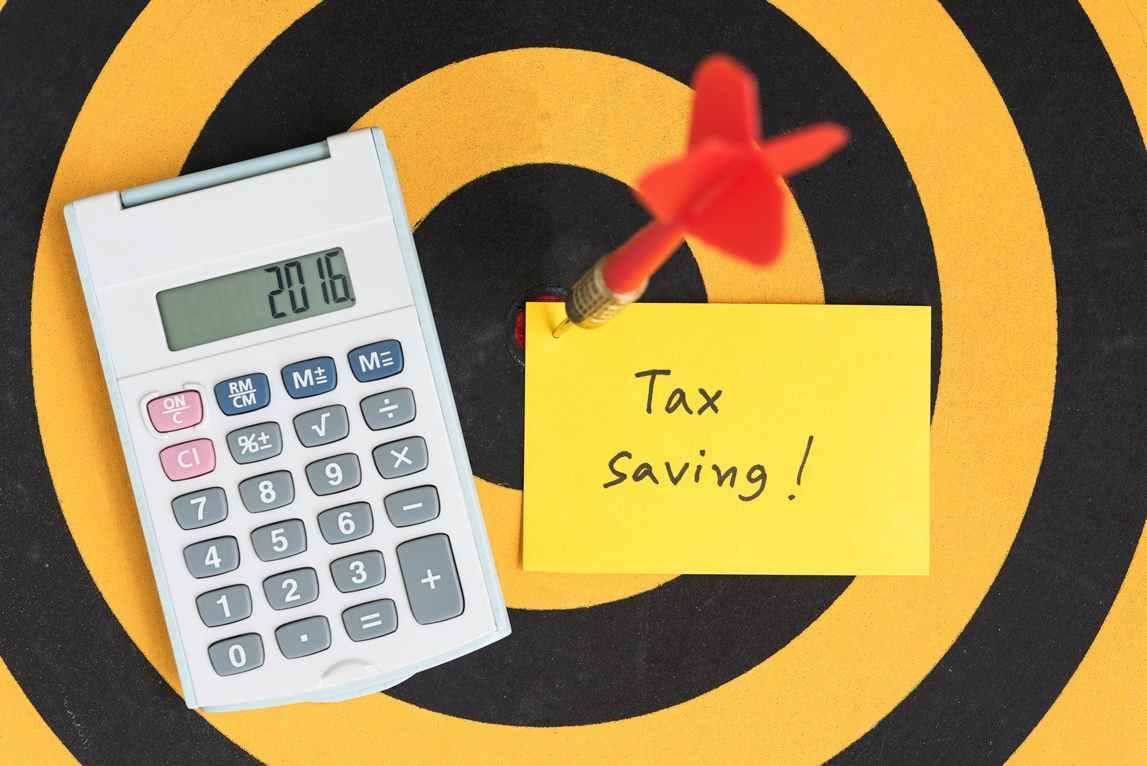So, you want to save on taxes and feel good about yourself at the same time? Well, my friend, you’ve hit the jackpot! Tax-deductible donations are your golden ticket to financial prudence and altruistic glory. Let’s dive into this delightful dance between philanthropy and fiscal savings.
The Joy of Giving (and Receiving Tax Breaks)
Who doesn’t love the warm, fuzzy feeling of helping others? Pair that with the thrill of reducing your tax bill, and you’ve got a match made in heaven. It’s like getting a thank-you note from the taxman while you’re out saving the world.

Understanding Tax-Deductible Donations
Before we get too giddy, let’s break down the basics. Tax-deductible donations are contributions you make to qualified organizations that you can subtract from your taxable income. It’s like a two-for-one deal: you help a cause, and the IRS gives you a high-five.
Types of Tax-Deductible Donations
Cash Donations: Simple and Straightforward
Cash is king, as they say. Throw some dollars at a worthy cause, keep the receipt, and watch your taxable income shrink. It’s as easy as pie, and just as satisfying.
Non-Cash Donations: Giving Beyond Money
Got an old car rusting in the driveway or a closet bursting with unused goodies? Donate them! Non-cash donations can range from clothes to furniture to vehicles. Just ensure they’re in good condition, and you’re golden.
Stock Donations: Donating Like a Wall Street Pro
Feeling generous and holding some appreciated stocks? Donate those bad boys! You avoid capital gains tax and get a deduction for the fair market value. It’s like hitting the financial trifecta.
Volunteer Expenses: Time is Money, Literally
Volunteering is noble, but did you know you can deduct certain expenses related to your selfless acts? Mileage, supplies, and even your superhero costume (okay, maybe not that) can be deductible.
Eligibility Criteria for Tax-Deductible Donations
Qualified Organizations: Not All Heroes Wear Capes
Not every organization qualifies for tax-deductible donations. Make sure you’re giving to a recognized 501(c)(3) charity. Think of them as the superheroes of the nonprofit world.
Documentation Requirements: Paperwork is Your Friend
The IRS loves its paperwork. Keep all receipts and written acknowledgments. For donations over $250, a mere receipt won’t cut it—you need a written confirmation from the charity. Treat your paperwork like gold.
Calculating Your Tax Savings
Fair Market Value: The Magic Number
Determining the value of non-cash donations is crucial. Fair market value is what someone would pay for the item in its current condition. It’s like playing Antiques Roadshow with your old stuff.
Percentage Limits: Know Your Giving Cap
The IRS isn’t a fan of unlimited generosity—there are caps. Generally, you can deduct up to 60% of your adjusted gross income (AGI) via cash donations. Non-cash and appreciated assets have different limits, so keep an eye on those percentages.
Strategies to Maximize Your Tax Savings
Bunching Donations: The Art of Timing
Instead of donating a steady stream annually, consider bunching donations into a single year. This strategy can push you over the itemizing threshold, maximizing your deductions.
Donor-Advised Funds: A Savvy Saver’s Tool
A donor-advised fund is like a charitable investment account. You get the immediate tax deduction and can disburse the funds to charities over time. It’s like having a philanthropic piggy bank.
Charitable Trusts: Giving with Benefits
Charitable trusts can be complex but rewarding. They allow you to donate assets, receive income, and get a tax deduction. Think of them as the Swiss Army knife of charitable giving.
Avoiding Common Pitfalls
Double-Dipping Dangers: Avoiding the Audit Alarm
Double-dipping is a no-no. Make sure you’re not claiming the same deduction twice, or you might get an unfriendly knock from the IRS.
Valuation Mistakes: Getting the Numbers Right
Overvaluing your donations can lead to trouble. Be honest and accurate with your valuations, or you’ll risk an IRS scolding and a reduced deduction.
Record-Keeping Tips
Receipts and Acknowledgments: Collecting Proof
Keep every receipt and acknowledgment like they’re concert tickets to your favorite band. This proof will save your bacon if the IRS comes calling.
Organizing Your Records: A Neat Freak’s Guide
Organized records are a lifesaver. Use folders, both physical and digital, to keep track of all your charitable contributions. It’s the Marie Kondo approach to tax season.
Filing Your Taxes
Itemizing Deductions: Going Beyond the Standard
If your donations and other deductions exceed the standard deduction, itemize! It’s extra work, but the tax savings can be substantial. Think of it as crafting a personalized tax escape route.
Tax Software and Professional Help: DIY vs. Expert Assistance
Tax software can be handy, but if your donations are complex, consider a tax professional. They can navigate the labyrinthine tax code with the finesse of a seasoned adventurer.
Special Considerations
State Tax Benefits: Double Dipping Done Right
Some states offer their own tax benefits for charitable donations. Check your state’s rules and double dip (legally) into those tax savings.
Retirement Account Donations: Tax-Free Giving After 70
If you’re over 70 and a half, you can donate up to $100,000 from your IRA directly to charity. This move bypasses taxable income-talk about a win-win!
Real-Life Success Stories
Tales from the Charitable Trenches
Hear from real people who’ve slashed their tax bills while doing good. Their stories might inspire your next move and give you practical insights.
Lessons Learned from Generous Tax Savers
Learn from the triumphs and tribulations of seasoned givers. Their experiences can guide you in maximizing your own tax savings.
Future Trends in Charitable Giving
Digital Donations: The Rise of Crypto Philanthropy
Cryptocurrency donations are on the rise. Learn how digital assets are changing the landscape of charitable giving and what it means for your taxes.
Policy Changes: Keeping an Eye on the Law
Stay ahead of the curve with the latest policy changes. Knowing what’s on the horizon can help you plan your giving strategy more effectively.
BOTTOM LINE
Recap of Key Points: Your Cheat Sheet to Saving
Summarize the main takeaways from our deep dive into tax-deductible donations. Keep this cheat sheet handy for future reference.
Encouragement to Give: The Heart of the Matter
At the end of the day, the joy of giving is its own reward. The tax savings are just the cherry on top. Give generously, and let your heart and wallet thank you.
Frequently Asked Questions (FAQs)
How do you maximize after tax income?
To maximize after-tax income, consider strategies like optimizing your deductions, utilizing tax-advantaged accounts such as 401(k)s and IRAs, taking advantage of tax credits, and minimizing taxable income through smart investment choices and retirement planning.
Which investment is best for tax savings?
Investments in tax-advantaged accounts such as Roth IRAs, 401(k)s, Health Savings Accounts (HSAs), and municipal bonds are excellent for tax savings. These accounts either offer tax-free growth, tax deductions, or tax-free withdrawals.
How can I save in taxes?
Save on taxes by itemizing deductions, taking advantage of tax credits, contributing to tax-advantaged retirement accounts, utilizing health savings accounts, and making charitable donations. Additionally, consider tax-loss harvesting and timing your income and expenses strategically.
What is the formula for tax savings?
The formula for tax savings is:
Tax Savings = Deduction Amount × Marginal Tax Rate
This means that the amount you save is equal to the deduction you claim multiplied by your highest tax rate.
How do I maximize my income?
Maximize your income by pursuing higher education or specialized training, negotiating your salary, seeking additional income streams, investing in assets that generate returns, and continuously enhancing your skill set to stay competitive in your field.
How do you maximize net income?
To maximize net income, focus on increasing revenue while controlling costs. This involves effective budgeting, reducing unnecessary expenses, optimizing tax strategies, and improving operational efficiency. Investing in revenue-generating activities can also help boost net income.
How do you maximize returns?
Maximize returns by diversifying your investment portfolio, managing risks, staying informed about market trends, and rebalancing your investments periodically. Consider both short-term and long-term investment strategies to achieve higher returns.
How to bring home more income?
Bring home more income by negotiating a higher salary, taking on side gigs or freelance work, investing in income-generating assets, reducing debt to free up cash flow, and leveraging tax-advantaged accounts to minimize taxes.
What is the best tax-free investment?
Municipal bonds are often considered the best tax-free investment because the interest earned is generally exempt from federal income taxes, and sometimes state and local taxes as well. Roth IRAs also offer tax-free withdrawals under qualifying conditions.
How do you get profit after tax?
Profit after tax (PAT) is calculated by subtracting all expenses, including taxes, from total revenue. The formula is:
Profit After Tax = Total Revenue – Total Expenses – Taxes
This figure represents the net income available to shareholders or reinvestment.
What is profitable after tax?
A business or investment is considered profitable after tax if it generates sufficient revenue to cover all expenses, including taxes, resulting in a positive net income. This profitability indicates financial health and sustainability.
How do you increase profit after tax?
Increase profit after tax by boosting revenue through sales growth, entering new markets, improving product offerings, and cutting costs through efficient operations and strategic sourcing. Effective tax planning and taking advantage of tax deductions can also enhance profitability.
What is alternative tax?
Alternative tax typically refers to the Alternative Minimum Tax (AMT), which ensures that individuals and corporations pay at least a minimum amount of tax, regardless of deductions, credits, or exemptions. It is designed to prevent excessive tax avoidance.
How can I save taxes?
Save taxes by maximizing deductions, utilizing tax credits, contributing to retirement accounts, employing tax-loss harvesting, making charitable donations, and investing in tax-efficient funds. Consulting a tax professional can help identify additional opportunities.
What is a tax saving fund?
A tax saving fund, often referred to as an Equity-Linked Savings Scheme (ELSS) in some countries, is a mutual fund that offers tax benefits under specific sections of the tax code. These funds typically invest in equities and come with a lock-in period.
How to save money in a new tax regime?
Save money in a new tax regime by understanding the changes and taking advantage of any new deductions or credits. Reevaluate your financial strategies, contribute to tax-advantaged accounts, and seek professional advice to optimize your tax savings under the new rules.









